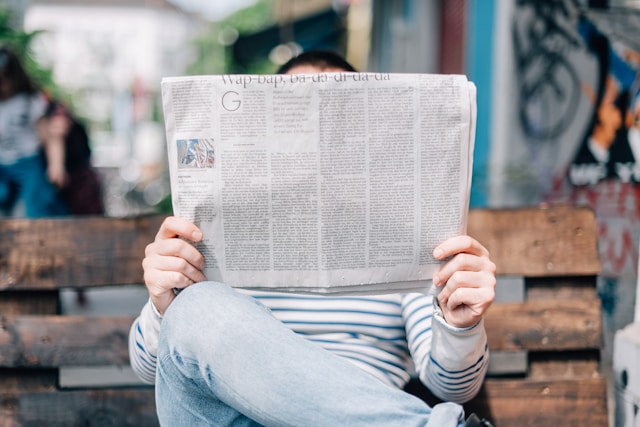Essec\Faculty\Model\Contribution {#2233
#_index: "academ_contributions"
#_id: "15323"
#_source: array:26 [
"id" => "15323"
"slug" => "the-impact-of-passive-social-media-viewers-in-influence-maximization"
"yearMonth" => "2024-12"
"year" => "2024"
"title" => "The Impact of Passive Social Media Viewers in Influence Maximization"
"description" => "KAHR, M., LEITNER, M. et LJUBIC, I. (2024). The Impact of Passive Social Media Viewers in Influence Maximization. <i>INFORMS Journal on Computing</i>, 36(6), pp. 1359-1756, C2."
"authors" => array:3 [
0 => array:3 [
"name" => "LJUBIC Ivana"
"bid" => "B00683004"
"slug" => "ljubic-ivana"
]
1 => array:1 [
"name" => "KAHR Michael"
]
2 => array:1 [
"name" => "LEITNER Markus"
]
]
"ouvrage" => ""
"keywords" => array:3 [
0 => "influence maximization"
1 => "social networks"
2 => "generalized Benders decomposition"
]
"updatedAt" => "2024-12-12 11:09:26"
"publicationUrl" => "https://doi.org/10.1287/ijoc.2023.0047"
"publicationInfo" => array:3 [
"pages" => "1359-1756, C2"
"volume" => "36"
"number" => "6"
]
"type" => array:2 [
"fr" => "Articles"
"en" => "Journal articles"
]
"support_type" => array:2 [
"fr" => "Revue scientifique"
"en" => "Scientific journal"
]
"countries" => array:2 [
"fr" => null
"en" => null
]
"abstract" => array:2 [
"fr" => "A frequently studied problem in the context of digital marketing for online social networks is the influence maximization problem that seeks for an initial seed set of influencers to trigger an information propagation cascade (in terms of active message forwarders) of expected maximum impact. Previously studied problems typically neglect that the probability that individuals passively view content without forwarding it is much higher than the probability that they forward content. Considering passive viewing enables us to maximize more natural (social media) marketing metrics, including (a) the expected organic reach, (b) the expected number of total impressions, or (c) the expected patronage, all of which are investigated in this paper for the first time in the context of influence maximization. We propose mathematical models to maximize these objectives, whereby the model for variant (c) includes individual’s resistances and uses a multinomial logit model to model customer behavior. We also show that these models can be easily adapted to a competitive setting in which the seed set of a competitor is known. In a computational study based on network graphs from Twitter (now X) and from the literature, we show that one can increase the expected patronage, organic reach, and number of total impressions by 36% on average (and up to 13 times in particular cases) compared with seed sets obtained from the classical maximization of message-forwarding users."
"en" => "A frequently studied problem in the context of digital marketing for online social networks is the influence maximization problem that seeks for an initial seed set of influencers to trigger an information propagation cascade (in terms of active message forwarders) of expected maximum impact. Previously studied problems typically neglect that the probability that individuals passively view content without forwarding it is much higher than the probability that they forward content. Considering passive viewing enables us to maximize more natural (social media) marketing metrics, including (a) the expected organic reach, (b) the expected number of total impressions, or (c) the expected patronage, all of which are investigated in this paper for the first time in the context of influence maximization. We propose mathematical models to maximize these objectives, whereby the model for variant (c) includes individual’s resistances and uses a multinomial logit model to model customer behavior. We also show that these models can be easily adapted to a competitive setting in which the seed set of a competitor is known. In a computational study based on network graphs from Twitter (now X) and from the literature, we show that one can increase the expected patronage, organic reach, and number of total impressions by 36% on average (and up to 13 times in particular cases) compared with seed sets obtained from the classical maximization of message-forwarding users."
]
"authors_fields" => array:2 [
"fr" => "Systèmes d'Information, Data Analytics et Opérations"
"en" => "Information Systems, Data Analytics and Operations"
]
"indexedAt" => "2025-01-02T14:21:55.000Z"
"docTitle" => "The Impact of Passive Social Media Viewers in Influence Maximization"
"docSurtitle" => "Articles"
"authorNames" => "<a href="/cv/ljubic-ivana">LJUBIC Ivana</a>, KAHR Michael, LEITNER Markus"
"docDescription" => "<span class="document-property-authors">LJUBIC Ivana, KAHR Michael, LEITNER Markus</span><br><span class="document-property-authors_fields">Systèmes d'Information, Data Analytics et Opérations</span> | <span class="document-property-year">2024</span>"
"keywordList" => "<a href="#">influence maximization</a>, <a href="#">social networks</a>, <a href="#">generalized Benders decomposition</a>"
"docPreview" => "<b>The Impact of Passive Social Media Viewers in Influence Maximization</b><br><span>2024-12 | Articles </span>"
"docType" => "research"
"publicationLink" => "<a href="https://doi.org/10.1287/ijoc.2023.0047" target="_blank">The Impact of Passive Social Media Viewers in Influence Maximization</a>"
]
+lang: "fr"
+"_type": "_doc"
+"_score": 8.772579
+"parent": null
}




